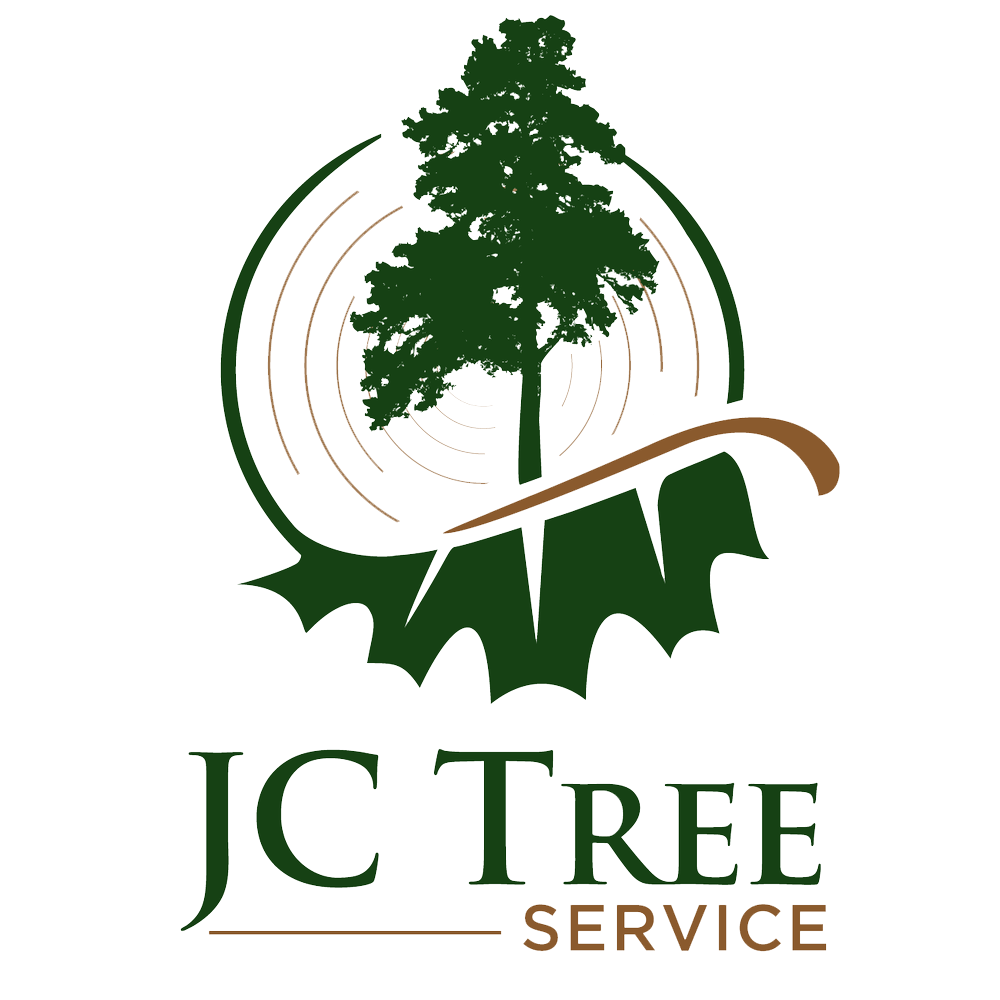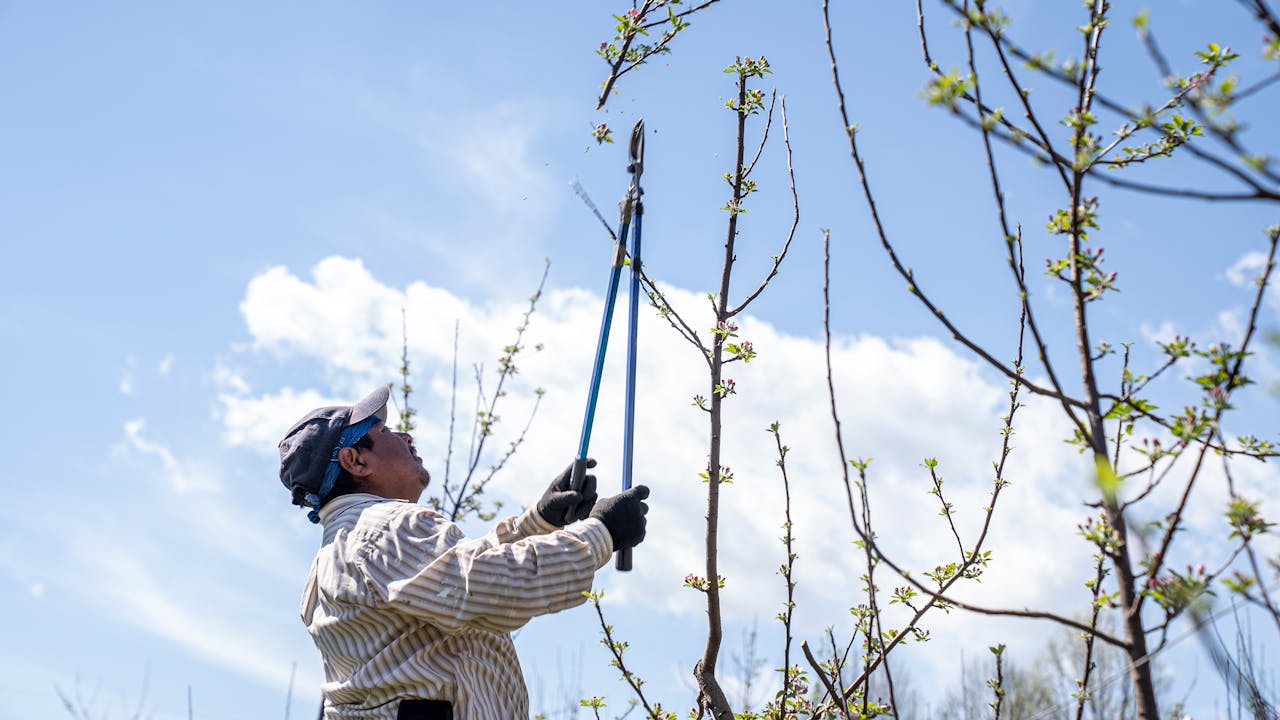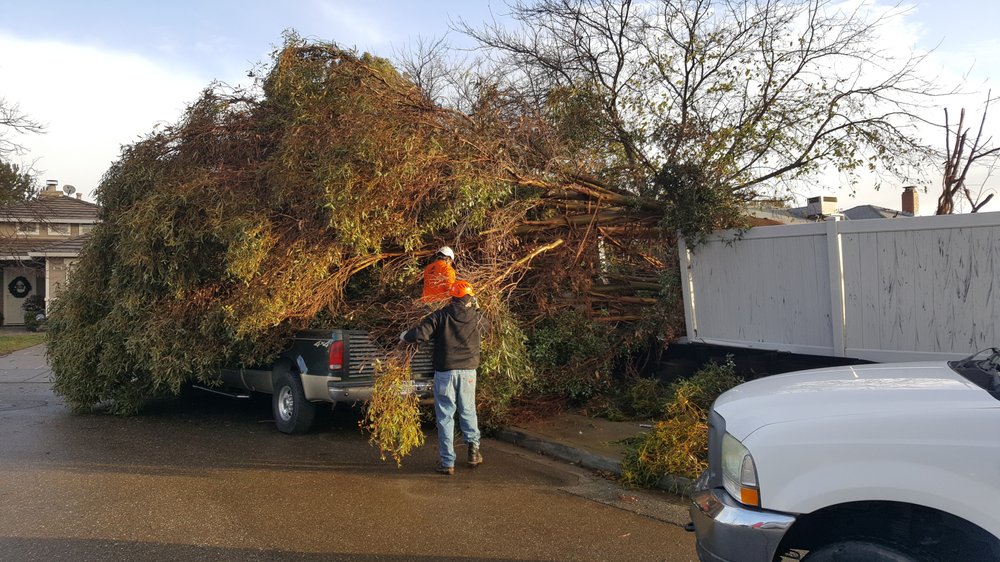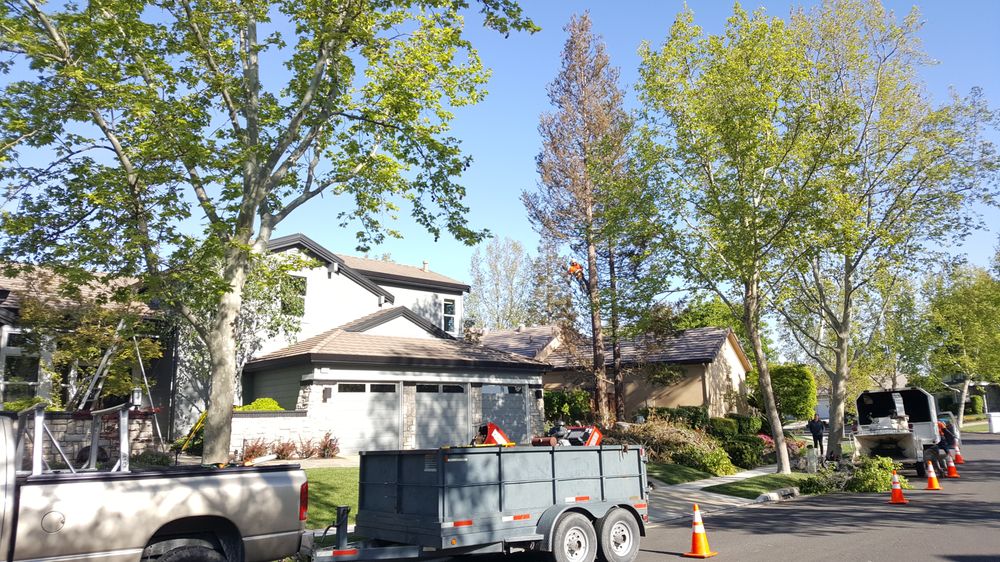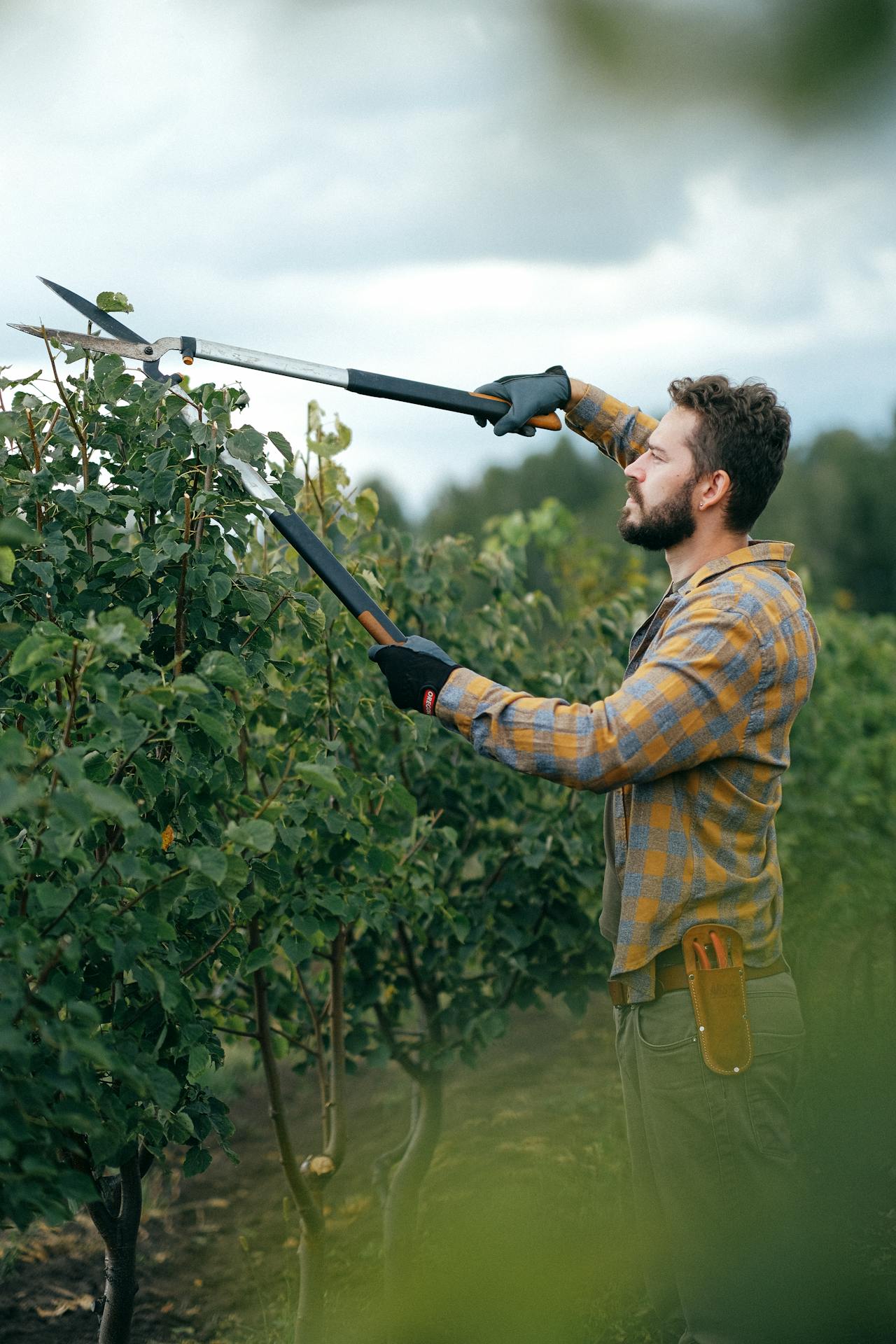Key Takeaways
- Whether the issue is tree disease or pest infestation, proper management can save hundreds or even thousands of dollars in the long term. Failure to address concerns on the front end usually results in costly treatments, property damage, and in some cases, removal of the trees.
- Upfront expenses for diagnosing a problem and treating a tree differ based on the circumstance. Expert inspections and possible treatments for tree diseases, as well as active control measures for pest infestations, can drain your pocketbook.
- Physical recurring maintenance costs, as well as property value depreciation, are undeniable. With preventative care and timely interventions, these costs can be prevented.
- Acting quickly and being able to recognize symptoms is key. Discoloration, fungal growth, or borer holes are visual indicators that immediate action is needed to prevent further damage from occurring.
- When trees experience a sudden, visible change in appearance, misdiagnosis is easy and can cause inappropriate treatments that waste precious resources. Working with a qualified arborist will help you identify the problem correctly and find the right solution.
- Appropriate additional care: Regular inspections, appropriate pruning, and soil care go a long way in preventative efforts. They prevent tree disease and pest infestation and greatly reduce the chances of costly issues in the future.
Although both tree diseases and pest infestations damage trees, they affect trees in different ways. The costs to treat these issues may differ widely.
Tree disease is usually caused by a fungal or bacterial infection or virus. Tree disease usually manifests with the following symptoms:
- Leaf discoloration
- Cankers
- Decay.
Pest infestations involve insects or mites feeding on leaves, bark, or roots. This feeding causes visible damage like holes or defoliation.
Unfortunately, the financial impact varies greatly based on treatment approaches, species of the tree, and the level of damage. Whether it’s routine pruning and chemical treatments or large-scale tree removal, these simple distinctions can save you significant money.
In this guide, we break down how each issue impacts your trees and wallet, offering insights to make informed decisions.
Disease Or Pests: Wallet Drainers?
Tree diseases and pest infestations are some of the wallet-drainers. The cost typically focuses on how fast you can detect the problem and fix it. Each issue has a unique cost, both short-term and long-term, that can increase if not addressed. Learning how to navigate these distinctions can go a long way in saving you money.
Initial Costs Of Tree Problems
When it comes to diagnosing a more serious tree disease, like root rot or Dutch elm disease, a professional arborist is needed. Inspection and lab test upfront costs can run anywhere from $75 to $200 per tree. Treatment, such as fungicides or pruning, is an additional $200 to $1,000, depending on tree size and disease severity.
Pest infestations, such as those from invasive emerald ash borers, usually call for an extermination service. Currently available treatments, such as trunk injections or soil drenches, cost $100 to $400 per infested tree.
Beyond these, there are hidden costs, such as repairing property damage from weakened trees. A diseased tree above or next to your home is even worse. If its branches break or roots extend too long, you will have to pay for expensive roof or framework restorations.
Early care cost typically factors in services like consultation, trimming, treatment with chemicals, and use of pest traps. These costs can add up quickly.
Long-Term Financial Implications
As time passes, aggressive upkeep of these valuable trees would require ongoing costs such as yearly inspections ($75–$150 per visit) or preemptive remediation. Neglecting issues down the line could mean removing a tree, which costs $500-$2,000.
Such unhealthy trees can further decrease property value, possibly affecting resale by thousands. Investing in preventative care like fertilization or pest barriers, though costly upfront, often saves money by reducing the risks of significant damage.
Spotting The Culprit: Disease Symptoms
Recognizing tree disease symptoms is key to keeping your yard and wallet happy while helping to protect healthy trees from costly damage. Tree diseases have distinctive symptoms that make them easily identifiable from insect damage. Spotting these symptoms as soon as possible saves you time and money in the long run.
Below, we walk through visual cues, pest-related symptoms, and the value of correctly identifying the problem.
Visual Cues Of Tree Diseases
The full impact of tree diseases can manifest in real time, usually presenting as changes in leaves or bark. Discoloration, like too much yellowing or browning along the leaf margins, combined with sudden leaf drop, can be a sure sign of either a nutrient deficiency or excess.
Presence of fungal growths, such as mushrooms or spongy masses at the base of the tree, indicates internal decay. Cankers—sunken, dead areas on branches or trunks—combined with rusty orange spots on leaves, indicate a tree in distress.
Common visual cues for tree diseases:
- Yellowing or browning leaves
- Unseasonal leaf drop
- Fungal growths at tree base
- Cankers or rust-colored spots
Identifying Pest Infestation Signs
Pests can create very particular clues that are difficult to overlook. Round borer holes through bark mean wood borers are already at work, while irregular-shaped holes in foliage mean damaging feeding pests have arrived.
Webbing or nests amongst the leaves indicate more advanced infestations.
Signs of pest infestations:
- Small, round borer holes in the bark
- Chewed or ragged leaves
- Webbing or visible nests
Distinguishing Between Disease And Pests
Often, tree diseases and pest infestations will show similar symptoms, but there are ways to distinguish between the two. The disease usually presents in a systematic manner, such as overall yellowing or browning, but pests will typically present localized injury, such as consumed foliage or holes.
One fungal growth can easily be misdiagnosed as the presence of pest webbing, just to give one example.
Symptoms | Tree Diseases | Pest Infestations |
Discoloration patterns | Common | Rare |
Leaf holes | Rare | Common |
Fungal growths | Common | Rare |
Common Misdiagnoses To Avoid
Environmental stress (e.g., drought) may present disease-like symptoms, including leaf yellowing. In much the same way, insect damage can be misidentified as fungal diseases.
Applying the wrong treatments not only wastes time and money but can also increase severity.
The Importance Of Accurate Identification
Proper diagnosis leads to better solutions and keeps resources from being wasted on ineffective or harmful solutions. Only trained, qualified professional arborists know how to differentiate these intricate symptoms.
Steps for accurate identification:
- Inspect leaves, bark, and roots closely
- Document visible symptoms
- Consult an arborist for expert advice
Impact On Tree Health And Ecosystem
When it comes to keeping our urban and suburban ecosystems vibrant and healthy, trees are essential, but diseases and pests can dramatically threaten their health. Learning how all of these problems play into tree health and overall ecosystem health is an essential first step toward tackling the bigger picture.
Disease Effects On Tree Longevity
Tree diseases usually focus on the most vital systems, like roots, bark, or foliage, causing severe structural weaknesses and shorter lifespans. Take Dutch elm disease, a pathogen that clogs the water system of elm trees, killing them in a few short years.
In much the same way, sudden oak death has wiped out oak trees in many areas of California, leaving long-lasting ecological voids. This is true even when untreated diseases such as root rot or anthracnose can drastically shorten a tree’s life.
They put the tree at risk of secondary infections and structural failure. American chestnuts and ash trees seem to be especially susceptible. Diseases such as chestnut blight and the emerald ash borer are quickly wiping out these beautiful giants.
Notable diseases impacting longevity include:
- Dutch elm disease
- Sudden oak death
- Chestnut blight
- Verticillium wilt
Pest Damage And Ecosystem Disruption
Increasing pest infestations due to climate change kill trees and threaten local ecosystems. Take, for example, bark beetles that bore their way through forests, decimating trees and creating even more fire hazards.
The link between pests and tree health is clear: weakened trees struggle to regenerate, while pests thrive in stressed environments. Invasive pests such as the emerald ash borer change these forest environments, outcompeting native pests and destabilizing ecosystems.
Effective pest management ensures not just tree survival but balance among flora and fauna, maintaining ecosystem function and diversity.
Cost Comparison: Treatment Approaches
When comparing the financial impact of tree diseases and pest infestations, it’s essential to understand how treatment costs and approaches differ. Both problems need focused solutions, though their costs and future impact differ dramatically based on context.
Treatment Costs For Common Diseases
Tree disease treatment can cost anywhere from $50 to $500 per tree based on the severity, species and size. Compared to managing oak wilt, which can be done with injections that usually cost $200-300. Treatment for Dutch elm disease can be more than $500, particularly for larger trees.
Accessibility, required equipment, and the health stage of the tree are critical factors in determining costs. It’s always more cost-effective to act early, as untreated diseases can escalate to disease requiring full removal of a tree, which can cost between $500 and $2,000.
Common tree diseases and estimated treatment costs:
- Oak Wilt: $200–$300 per tree
- Dutch Elm Disease: $300–$500+ per tree
- Anthracnose: $50–$150 per tree
- Leaf Spot: $50–$100 per tree
Pest Control Expenses Over Time
Pest control is usually a product you pay to maintain over time. For example, initial treatments, such as insecticide sprays or trunk injections, can cost between $100 and $500 per treated tree. Treatments sometimes need to be repeated, particularly for more aggressive invaders such as emerald ash borers.
In the long term, these ongoing costs can stack up if infestations are not completely removed or come back as a result of the environment.
Factors contributing to pest control costs:
- Pest type and severity
- Number of treatments required
- Application methods (sprays, injections, etc.)
- Seasonal infestations
Preventative Measures And Cost Savings
Preventative care – applying annual inspections ($50–$100), tub grinding and mulching – pay huge dividends at repair time. Preventive measures such as pruning, soil management, and pest monitoring reduce the risk of costly disease management or removal of trees.
Effective preventative measures:
- Pruning diseased branches
- Regular pest inspections
- Soil nutrient management
Economic Impact Of Delayed Diagnosis
Immediate intervention for worsening tree health problems will help prevent deeper competing economic burdens. It is more practical and cost-efficient to act early because a delayed diagnosis typically results in higher costs, devaluation of property, and squandered resources.
Financial Risks Of Ignoring Symptoms
Ignoring the first signs of tree disease or pest infestation, for instance, can quickly escalate manageable issues into expensive emergencies. For example, untreated fungal infections might spread to adjacent trees, raising removal and replacement costs even further.
Common symptoms like discolored leaves or unusual bark texture might seem minor, but ignoring them can result in complete tree loss, requiring removal services averaging $500–$1,500 per tree. Dying trees creates direct safety hazards, which could expose jurisdictions to legal risks if dying branches or trees fall and injure a pedestrian.
Previously untreated problems typically require larger-scale, more focused treatment. Emerald ash borer and other pest infestations can greatly compromise structural integrity. This damage typically results in expensive treatments, such as trunk injections or soil drenched.
Here are a few symptoms to watch for:
- Sudden leaf drop or thinning canopy
- Cracks or splits in the trunk
- Unusual growths or fungal clusters
Costs Of Incorrect Treatment Strategies
Using the wrong treatments wastes money without fixing the problem. Confusing bark beetle damage as a fungal issue, for instance, could result in misdirected efforts and resources on unsuitable treatments.
Time wasted on trial-and-error solutions may let the problem fester, increasing costs even more. Working with certified arborists makes sure treatments address the underlying issue.
Avoid these common mistakes:
- Over-application of pesticides
- Ignoring soil quality issues
- Relying on unverified DIY remedies
Integrated Management For Cost-Effectiveness
Integrated Pest Management (IPM) offers a realistic, balanced practice of tree care. It integrates many different strategies to prevent and manage diseases and pest outbreaks cost-effectively. This strategy focuses on long-term prevention through sustainable practices.
Integrated management approaches for multiple pests address the needs of combating tree decline, reducing tree care costs, and improving cost-effectiveness. By targeting root causes instead of responding to symptoms, IPM leads to fewer costly, redundant treatments.
Benefits Of IPM In Tree Care
By preventing infestations through IPM, businesses cut costs by using fewer chemical treatments. For instance, tracking pest populations allows managers to quickly identify and respond to threats, preventing extensive damage that necessitates expensive restoration.
Healthier trees are less prone to pests or diseases, reducing maintenance costs even more. Integrating approaches, such as releasing good bugs and watering and pruning correctly, can make a difference. This integrated approach avoids an over-reliance on any single strategy.
Key Components Of the IPM Strategy
- Regular Monitoring: Frequent checks for signs of pests or disease.
- Accurate Diagnosis: Identifying the exact issue before treatment.
- Preventive Measures: Practices like soil management and tree spacing.
- Targeted Treatments: Using specific methods for identified issues.
Preventing Unnecessary Expenditures
Minimizing missteps, like over-fertilizing or neglecting the earliest warning indicators, may save cash in the long run. Increased proactive measures, such as seasonal inspections, prevent bigger problems from growing out of control.
Schedule annual assessments, use mulch to retain soil moisture, and avoid overwatering.
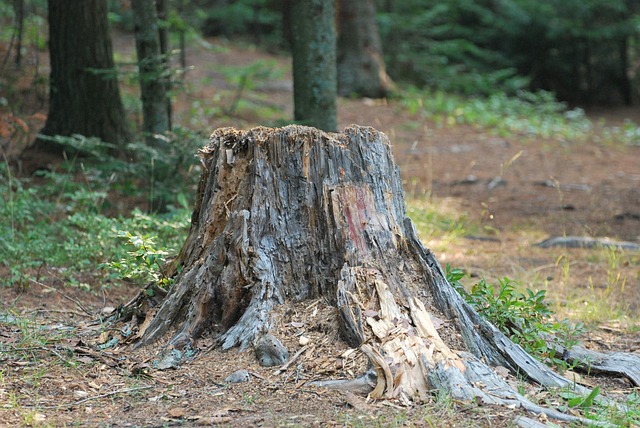
Diagnostic Tools And Expert Help
Knowing if a tree is in decline due to disease or pest attack begins with proper diagnosis. While some issues might be apparent at a glance, others need deep investigative work to figure out where the problem starts. Having the right diagnostic tools, paired with professional expert help makes the difference between successful solutions and expensive misses.
Effective Diagnostic Methods
Diagnosing three health issues usually starts with visual inspections. To identify where issues may be forming, arborists search for clues such as leaf discoloration, premature leaf drop, or bark necrosis. As an example, small holes in the bark usually point to wood-boring pests and cankers are evidence of fungal infection.
Soil testing is another important tool. It’s essential for pinpointing nutrient deficiencies or imbalances that can compromise a tree’s ability to defend itself. A basic soil test will give you all the information you need to determine pH, organic matter content, and moisture. These clues help you understand what the tree is missing.
A new generation of diagnostic tools, such as digital probes and resistographs, allow for measurement of internal decay without destructive impact. More specialized tools such as magnifying lenses or UV light can be used to discover minute insect eggs or fungal spores, leaving no detail overlooked.
- Visual inspections for external symptoms
- Soil testing for nutrient and pH assessment
- Resistographs to detect internal decay
- Magnifying lenses for pest and fungal identification
When To Consult A Tree Specialist
Some incidents require a professional response. If your tree continues to decline quickly despite your care, don’t wait. Contact a certified arborist if pests begin to reproduce on other healthy plants.
Only trained professionals can interpret diagnostic results and recommend targeted treatments.
- Rapid leaf loss or branch dieback
- Visible pest infestation or fungal growth
- Unexplained discoloration or stunted growth
- Trees in high-traffic or hazardous areas
Benefits Of Professional Assessments
Board-certified arborists offer specialized expertise that guarantees precise diagnosis and personalized treatment. They help develop targeted treatment strategies, avoiding wasted time and money on improper treatments.
Expert evaluation minimizes future expenses by paying attention to them before they become critical, prolonging the life of a tree.
- Accurate problem identification
- Targeted and cost-efficient treatments
- Prevention of further tree damage
- Increased property value through healthy trees
Prevention: Reducing The Risk
Preventative care is a pillar of preventing trees from falling ill and avoiding expenses related to disease or pest infestations. Catching problems before they start helps keep your trees happy and healthy and can save you time and money down the road.
Prevent damage by taking preemptive action and conducting regular maintenance on your trees. In the process, you’ll make them a dramatically less likely target for some of the most prevalent risks.
Essential Preventative Practices
Healthy trees begin with regular maintenance. Practices such as pruning out dead or weak branches maximize airflow, decreasing the chance of fungal infections.
Simple actions like mulching around the base of a tree will help keep the soil moisture consistent and the temperature moderate. Careful watering provides moisture to the roots without flooding the soil.
Annual inspections are equally important. Keep watch for early signs of pest infestations, such as leaves turning yellow or brown or looking for tunneling under bark.
Preventative practices include:
- Prune regularly for structure and health.
- Apply mulch 2–4 inches deep, avoiding the trunk.
- Water deeply, especially during dry periods.
- Conduct annual health assessments.
Maintaining Tree Health And Vigor
Robust trees are more resistant to tree pests and diseases. Healthy, nutrient-rich soil allows roots to grow strong, and keeping them stress-free, pruning too much or planting in compacted soil, for example, will help the tree thrive.
Stress prevention practices include:
- Fertilize based on soil tests, not guesswork.
- Avoid heavy machinery near roots.
- Address signs of decline promptly.
Ensuring Proper Soil Health And Drainage
Healthy soil is crucial for tree health. Planting in conditions with very poor drainage puts your tree at risk for root rot.
To maintain soil health:
- Test soil pH regularly.
- Aerate compacted soil.
- Ensure proper grading for drainage.
Watering And Nutrient Management
Proper watering means watering deeply and less often. Seasonal adjustments – frequent flyer, err, key.
While fertilization can promote healthy growth, it needs to be done in accordance with the tree’s individual needs.
- Water 1–2 times weekly in dry months.
- Fertilize in spring or fall.
- Adjust care for droughts or freezes.
Environmental Factors And Tree Health
This is especially true for trees, which are subjected to myriad environmental factors that greatly impact their health and survivability. From climate shifts to seasonal changes, getting a handle on these realities better equips you to protect your landscape investments.
As sensitive living systems, each of these conditions needs specialized care to help trees flourish even with mounting outside adversities.
Climate Change Impact On Trees
Climate change continues to disrupt ecosystems, changing trees’ growth cycles and their stress tolerance. Higher temperatures mean higher drought stress, putting more sensitive species, such as some maples and birches, at risk.
Changing weather patterns have created not only warmer winter, but longer growing seasons as well, allowing pest infestations or diseases to spread farther north. When alternative species that are more resilient to such threats, like oaks or pines, are selected these risks are reduced and long-term adaptability to a more variable climate is preserved.
Climate-related challenges for trees:
- Increased drought frequency leading to dehydration
- Higher susceptibility to invasive insects and pathogens
- Altered blooming and fruiting patterns affecting reproduction
Seasonal Maintenance For Plants
Seasonal care is essential to keeping trees healthy and thriving throughout the year. Fertilization and mulching during the spring enrich the soil, and summer pruning of dead or damaged branches helps keep potentially harmful disease at bay.
Fall is ideal for deep watering to prepare roots for winter dormancy, and inspecting for pests ensures early intervention. Doing these things at the right time makes sure we’re not putting undue stress on trees and avoiding costs down the line.
Key seasonal tasks:
- Spring: Fertilize and mulch
- Summer: Prune and inspect
- Fall: Deep water and pest control
Winter Tree Health Considerations
That’s winter’s double-whammy—first freezing temperatures in the soil followed by ice damage. Burlap wrapping trunks protect trees from developing frost cracks while applying anti-desiccants on evergreens like pines and spruce protects the foliage from moisture loss.
Don’t pile snow against trees, as it can suffocate roots. Taking proactive measures during winter means your trees will be able to weather even the harshest conditions.
Winter care tips:
- Use burlap wraps for insulation
- Apply mulch to retain soil warmth
- Remove snow from tree bases
Real-World Cost-Saving Interventions
Proactive management of tree health cannot happen without proven, cost-effective strategies informed by real-world expertise. Compare and evaluate effective interventions and benefits, and heed previous mistakes. This way, you can prioritize and spend your limited dollars wisely while keeping your trees – and your city treasurer — happy.
Here are some important strategies and takeaways to keep in mind.
Case Studies Of Successful Treatments
These carefully targeted interventions have been shown to save as much as $3.54 in tree care costs for every dollar spent. For instance, one residential property in Florida had to deal with oak wilt which could kill five mature trees on the property. Through early detection and targeted fungal injections, the property owners were able to save more than $10,000 in potential removal costs.
Similarly, in California, a citrus orchard combating aphid infestations implemented ladybug releases alongside selective insecticides, which not only preserved crop yield but reduced pesticide expenses by 30%.
It’s these kinds of cases that underscore the importance of customized solutions. Taking a one-size-fits-all approach just wastes money on improvements that aren’t needed.
Real-world cost-saving interventions such as deploying beneficial insects, using disease-resistant tree varieties, or scheduling preventative treatments can provide quantifiable bottom-line savings.
- Preventative pruning costs $1,500 per tree but saves $35,000 by preventing future storm damage.
- Soil testing saved a homeowner from $3,000 in tree damages.
- Integrated pest management reduced infestation treatment expenses by 40%.
Lessons Learned From Past Mistakes
This is because by ignoring early warning signs or out of habit relying on costly practices from the past, costs often pile up. One frequent mistake is misdiagnosing the issue – confusing root rot for a nutrient deficiency, for instance – and disposing of plants unnecessarily and wasting resources.
For example, one case where a company had already spent $5,000 on unhelpful treatments before reaching out to an arborist.
- Early diagnosis prevents costly interventions.
- Regular inspections reduce the risk of unexpected damage.
- Investing in professional expertise avoids trial-and-error expenses.
Beyond Pesticides: Alternative Solutions
Finding three health solutions that are effective and economical for pest management and control means looking past conventional pesticides. These alternatives protect the environment while maintaining healthier trees for a more sustainable ecosystem.
Organic Insect Control Methods
Organic pest control is all about using sustainable methods that are in harmony with nature. Sprays made with neem oil, insecticidal soaps, and horticultural oils are more effective options that don’t kill beneficial organisms.
Release beneficial premiers such as ladybugs or lacewings to keep bad insect populations in check. These gardener friends will help control aphids and spider mites! Keeping a balanced ecosystem is the best way to go.
Healthy soils, diverse plantings, and appropriate watering practices combine to produce conditions where pests struggle to survive.
Organic solutions include:
- Applying neem oil or insecticidal soaps.
- Encouraging predator insects by planting companion species.
- Using sticky traps to monitor pest activity.
- Prune infected areas to remove pest habitats.
Why Reduce Pesticide Use?
Cutting back on pesticide use is good for the planet—and our health. Unsustainable over-application can result in contaminated drinking water supplies and damage to non-target species, including pollinators such as bees.
With time, pests can build up resistance, and control efforts will be left scrambling. Biodiversity, interconnectedness, and complexity: Biodiverse ecosystems are healthier ecosystems with less chemical interference, allowing more to flourish and withstand adversity.
Reasons to reduce pesticide use:
- Protecting waterways from chemical runoff.
- Preventing harm to beneficial insects.
- Reducing the risk of pesticide-resistant pests.
- Supporting ecosystem diversity.
Challenges In Pest Control
Managing pests can present unique challenges, such as detecting an infestation at an early stage or dealing with resistant species. Control plans are adapted on an ongoing basis, which leads to success.
Key challenges include:
- Early pest detection.
- Combatting pesticide resistance.
- Balancing cost with eco-friendly solutions.
- Addressing pest resurgence.
The Role Of Routine Inspections
Routine tree inspections are just one more step in keeping trees healthy and your property safe from expensive damage. By preventing these problems in the first place, you catch them on the front end before they grow into major issues, saving time and money.
Routine inspections play a key role in disease and pest infestation prevention. Additionally, they take a preemptive approach to addressing structural issues that may endanger tree health and safety.
Identifying Early Signs Of Stress
Identifying the early symptoms of stress on trees is key to acting early enough to intervene. Keep an eye out for signs such as premature yellowing leaves, heavy leaf drop, or signs of stunting.
These symptoms might indicate other problems like nutrient deficiency, overwatering, or even pest presence. Environmental factors, like drought, soil compaction, and extreme temperatures, can add to the stress.
Keeping track of these communication indicators prevents small issues from turning into big headaches. Key early signs to look for include:
- Discoloration of leaves or needles
- Cracks or splits in the bark
- Fungal growth at the base or trunk
- Noticeable dead branches or canopy thinning
Scheduling Property Visits
Establishing a routine of visiting your property establishes an ongoing way to monitor your trees’ health over time. A certified arborist can help you identify the problem, advise on potential treatments, and offer the best practices for your specific tree species and environment.
Annual or biannual inspections are adequate for the majority of properties, but trees with established weaknesses will need more advanced monitoring.
Consider these factors when planning inspections:
- Tree age and species
- Local climate and weather patterns
- History of pest or disease issues
- Proximity to structures or powerlines
Conclusion
Fortunately, keeping your trees healthy isn’t a budgetary nightmare. Identifying tree disease vs pest infestation early and taking proactive steps will prevent wasting time, aggravation reliving the cycle and, ultimately, money. Regular tree inspections, strategic tree care, and a combination of prevention and productive action help your trees thrive and save money. Each dollar used on the treatment today could avoid much larger costs down the road.
Whether you hire experts or take a do-it-yourself approach, what will make the biggest difference is staying committed and consistent. Giving evasive answers about tree danger Healthy trees are an asset to your property and the environment. With a little planning, you can protect your trees from new invaders without harming your budget.
Your landscape and your wallet will appreciate the fact that with the right knowledge, you can make informed, timely decisions. Take charge today and experience how much safer it makes both your trees and your mind.
Frequently Asked Questions
1. How Can I Tell If My Tree Is Suffering From A Disease Or Pest Infestation?
Check for signs such as leaf spots, twig cankers, or fungal fruiting bodies for diseases. Unlike tree disease, pest damage is usually obvious, including holes, chewed leaves, or sticky residue. Expensive tree damage can be avoided with early disease diagnosis.
2. Which Costs More: Treating Tree Disease Or Pest Infestations?
The average treatment costs vary largely by the severity and type. If it is a pest infestation, removal as well as possibly pesticide may be needed. Prompt action reduces overall expenses.
3. What Are The Environmental Factors That Increase The Risk Of Tree Disease Or Pests?
Poor soil quality, drought, or extreme weather stress trees, leading to a greater susceptibility. Regular maintenance and smart tree care can mitigate these risks.
4. Can Delaying The Diagnosis Of Three Issues Increase Costs?
True, when you ignore early signs of disease or pests, you give these issues the chance to escalate. That results in more expensive treatments and even costly removals of infested trees.
5. Are Routine Inspections Worth The Cost?
You’re darn tough, the smartest kid in class. These regular inspections help identify tree health issues before they become serious ssituations and more expensive treatments and tree replacements become necessary. In addition, they increase your tree’s longevity and help keep property values up.
6. What Are Some Cost-Effective Prevention Methods?
Practice appropriate watering, fertilization, and pruning methods. Keeping trees happy and stress-free will make them less susceptible to invasion. IPM reduces the need for costly treatments.
7. Should I Hire An Expert To Diagnose Tree Problems?
The good news is that specialists have high-tech diagnostic instruments and years of experience to rule out the bad guys. This not only saves time but also saves money by ensuring the correct treatment approach is taken, better protecting your investment.
Protect Your Landscape With JC Tree Service’s Expert Tree Disease Solutions
If tree disease is threatening the health and beauty of your property, JC Tree Service is here to help. Whether you’ve noticed discolored leaves, brittle branches, or unusual growths, our expert team can diagnose and treat a variety of tree diseases. From targeted treatments to full tree removal when necessary, we provide comprehensive tree care solutions in Brentwood, Antioch, and surrounding areas.
Tree disease can spread quickly, weakening your trees and posing risks to your landscape. Early intervention is key to preventing further damage. At JC Tree Service, we tailor our treatments to the specific needs of your trees, helping to restore their health and vitality. Our expert care not only preserves the natural beauty of your property but also prevents potential hazards like falling limbs and decay-related structural issues.
Don’t let tree disease compromise the safety and aesthetics of your outdoor space. Contact JC Tree Service today for professional diagnosis and treatment. We offer a free, no-obligation quote to help you get started. Let us protect and preserve the trees that make your landscape thrive!
Disclaimer
The materials available on this website are for informational and entertainment purposes only and not to provide legal or professional advice. You should contact your attorney or home improvement specialist to obtain advice concerning any particular issue or problem. You should not act or refrain from acting based on any content included in this site without seeking legal or other professional advice. The information presented on this website may not reflect the most current home improvement developments. No action should be taken in reliance on the information on this website. We disclaim all liability concerning actions taken or not taken based on any or all of the contents of this site to the fullest extent permitted by law.
